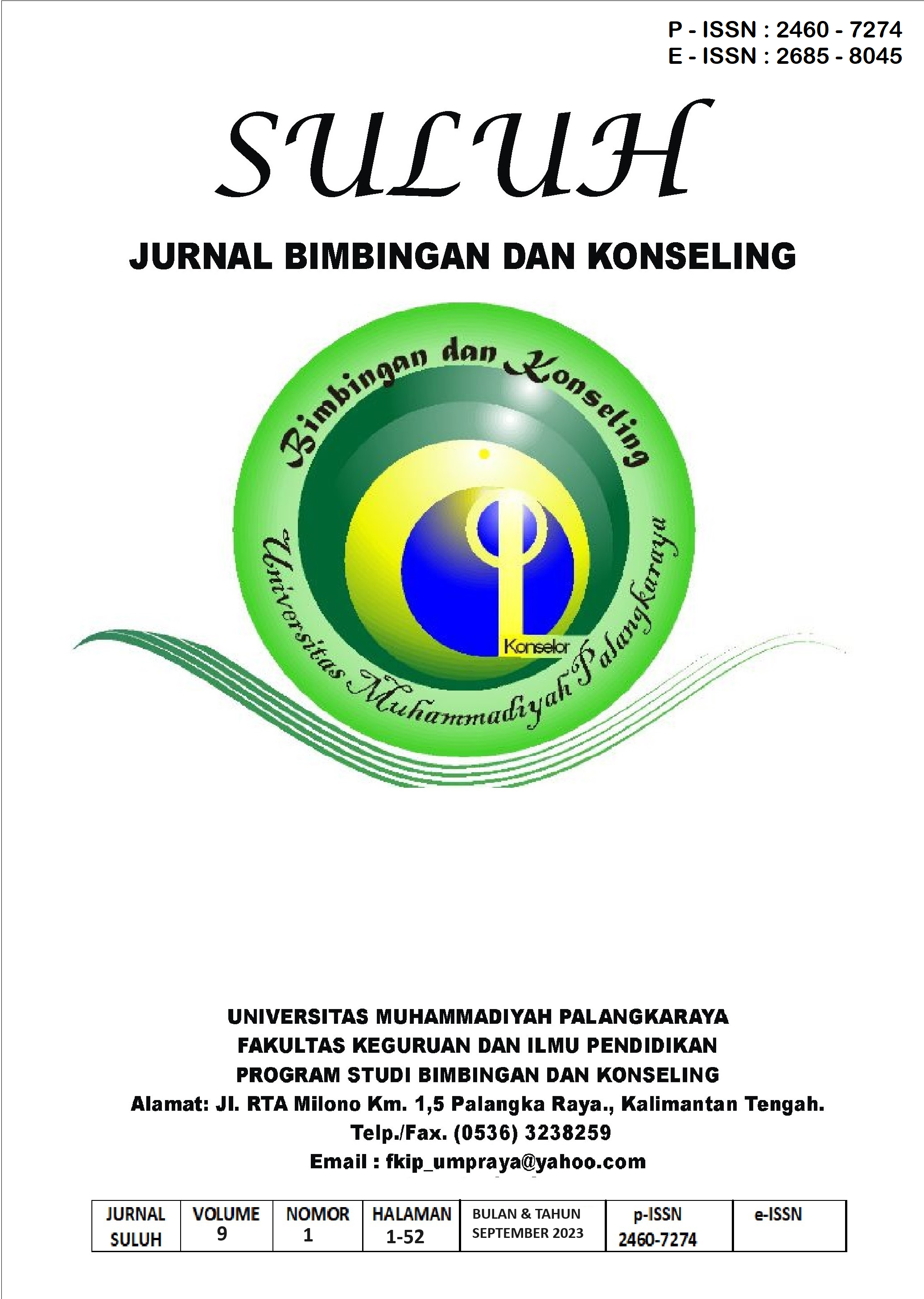Uncovering Self-Identity of Adolescent Students
Main Article Content
Abstract
Adolescence is a period of transition from children to adults. Transitional status often makes adolescent students confused in determining which choices are right for themselves. In fact, they need to know themselves better, their potential and what they like and dislike, and to make plans for their future. Therefore, to avoid confusion in their selves, self-identity is needed. The purpose of this study is to describe aspects of self-identity of adolescent students at SMA Negeri 4 Padang. The data were collected through a self-identity questionnaire given to a total of 33 students. This study used purposive sampling technique. The data were analyzed quantitatively and described comprehensively. This study found that the mean score of adolescent students’ self-identity was 133.52 or 72.07% of the ideal score. In addition, 9.09% students had very high self-identity; 36.36% students had high self-identity; 24.24 students had moderate self-identity; 30.30 students had low self-identity; and none had very low self-identity. The development of self-identity of adolescent students must continue to be improved in order to support the development of their learning.
Downloads
Article Details

This work is licensed under a Creative Commons Attribution-ShareAlike 4.0 International License.
All rights reserved. This publication may be reproduced, stored in a retrieval system, or transmitted in any form or by any means, electronic, mechanical, photocopying, recording.
References
Ardi, Z., Ibrahim, Y., & Said, A. (2012). Capaian tugas perkembangan sosial siswa dengan kelompok teman sebaya dan implikasinya terhadap program pelayanan bimbingan dan konseling. Konselor, 1(2).
Ardi, Z., Neviyarni, N., Karneli, Y., & Netrawati, N. (2019). Analisis pendekatan Adlerian dalam konseling kelompok untuk optimalisasi potensi diri siswa. Jurnal Education: Jurnal Pendidikan Indonesia, 5(1), 7–12.
Desmita. (2008). Psikologi perkembangan. Remaja Rosdakarya.
Erikson, Erick, H. (1989). Identitas dan siklus hidup manusia; bunga rampai 1. Penerjemah: Agus Cremes. Gramedia.
Fatchurahman, M., Setiawan, M. A., & Karyanti, K. (2023). Intervention group logotherapy and performance measures for reducing phubbing in Generation Z. Estudos de Psicologia (Campinas), 40, e200244.
Fitri, E., Ifdil, I., & Neviyarni, S. (2016). Efektivitas layanan informasi dengan menggunakan metode blended learning untuk meningkatkan motivasi belajar. Jurnal Psikologi Pendidikan Dan Konseling: Jurnal Kajian Psikologi Pendidikan Dan Bimbingan Konseling, 2(2), 84–92.
Hidayah, N., & Huriati, H. (2017). Krisis identitas diri pada remaja “identity crisis of adolescences.” Sulesana: Jurnal Wawasan Keislaman, 10(1), 49–62.
Husni, M. A., & Purwaningsih, I. E. (2013). Identitas diri ditinjau dari kelekatan remaja pada orang tua di SMKN 4 Yogyakarta. Jurnal Spirits, 3(2), 26–31.
Netrawati, N., Khairani, K., & Karneli, Y. (2018). Upaya guru BK untuk mengentaskan masalah-masalah perkembangan remaja dengan pendekatan konseling analisis transaksional. ISLAMIC COUNSELING: Jurnal Bimbingan Dan Konseling Islam, 2(1), 79–90.
Nirwana, H., Firman, F., & Syahniar, S. (2018). Pencegahan Kejahatan Seksual melalui Pelaksanaan Bimbingan dan Konseling dalam Kegiatan Layanan Informasi untuk Meningkatkan Relegiusitas, Kontrol Diri serta Kematang Sosial Siswa Melakukan Tindakan Pelecehan Seksual di Sekolah Menengah Kejuruan (SMK) di Kota Padang.
Papalia, O. & F. (2013). Perkembangan Manusia. Salemba Humanika.
Rambe, S. A., Mudjiran, M., & Marjohan, M. (2017). Pengembangan Modul Layanan Informasi untuk Mengembangkan Kontrol Diri dalam Penggunaan Smartphone. Konselor, 6(4), 132–137.
Rizka, Z., Syahniar, S., & Syukur, Y. (2017). Efektivitas Layanan Informasi dalam Meningkatkan Perencanaan Karier Siswa.
Sahroni, I., Daulay, A. A., Fajariah, I. S., & Alvi, I. (2023). Penggunaan Media Sosial Terhadap Kepercayaan Diri Remaja: The Use Of Social Media On Adolescent Self Confidience. Suluh: Jurnal Bimbingan Dan Konseling, 8(2), 96–102. https://doi.org/10.33084/suluh.v8i2.4499
Sakti, B. C., & Yulianto, M. (2018). Penggunaan media sosial instagram dalam pembentukan identitas diri remaja. Interaksi Online, 6(4), 490–501.
Santrock, J. W. (2003). Adolescence perkembangan remaja (terjemahan). Jakarta: Erlangga.
Santrock, J. W. (2007). Remaja edisi 11 jilid 1. Jakarta: Erlangga.
Saputro, K. Z. (2018). Memahami ciri dan tugas perkembangan masa remaja. Aplikasia: Jurnal Aplikasi Ilmu-Ilmu Agama, 17(1), 25–32.
Syukur, Y. (2015). Wawasan dan Sikap Konselor Terhadap Klien. Artikel. BK UNP Padang.
Yuliarsih, E., Daharnis, D., & Karneli, Y. (2020). Self-Acceptance of Young Prisoners in the Institute for Special Education for Children (LPKA). Jurnal Aplikasi IPTEK Indonesia, 4(1), 19–23.

